
Roots
To stand on the precipice of understanding natural hair movements is to feel the stirring of ancient currents beneath one’s feet. It is to sense the deep resonance of ancestral voices, whispering stories of resilience and identity that stretch back through time, long before the modern gaze began to impose its narrow ideals. For those whose strands bear the indelible signature of coils and kinks, whose hair defies a simple brush or a swift straighten, the question of whether natural hair movements still challenge modern beauty standards echoes with a profound historical weight. This inquiry is not a passing thought; it touches the very core of selfhood, community, and the enduring power of a heritage often misunderstood, often marginalized, yet always vibrant.

Hair’s Ancient Lineage
Consider the genesis of afro-textured hair itself. It is not merely a genetic quirk, but a biological marvel, a living testament to environmental adaptation over countless millennia. The tightly coiled structure, an architectural wonder, evolved to shield the scalp from the relentless sun’s intensity and to maintain moisture within arid climes. This physical endowment served as a marker of identity, a visual language spoken across vast landscapes.
In pre-colonial African societies, hair was regarded as the body’s highest point, a conduit to the divine and a vessel of spiritual power. Lori Tharps, a scholar of hair history, notes that in these societies, hair communicated a person’s age, marital status, social rank, and even spiritual beliefs (Tharps, 2021). A person’s coiffure could convey their tribal affiliation, their readiness for war, or their mourning. The very arrangement of hair communicated volumes, a living scripture inscribed upon the head.
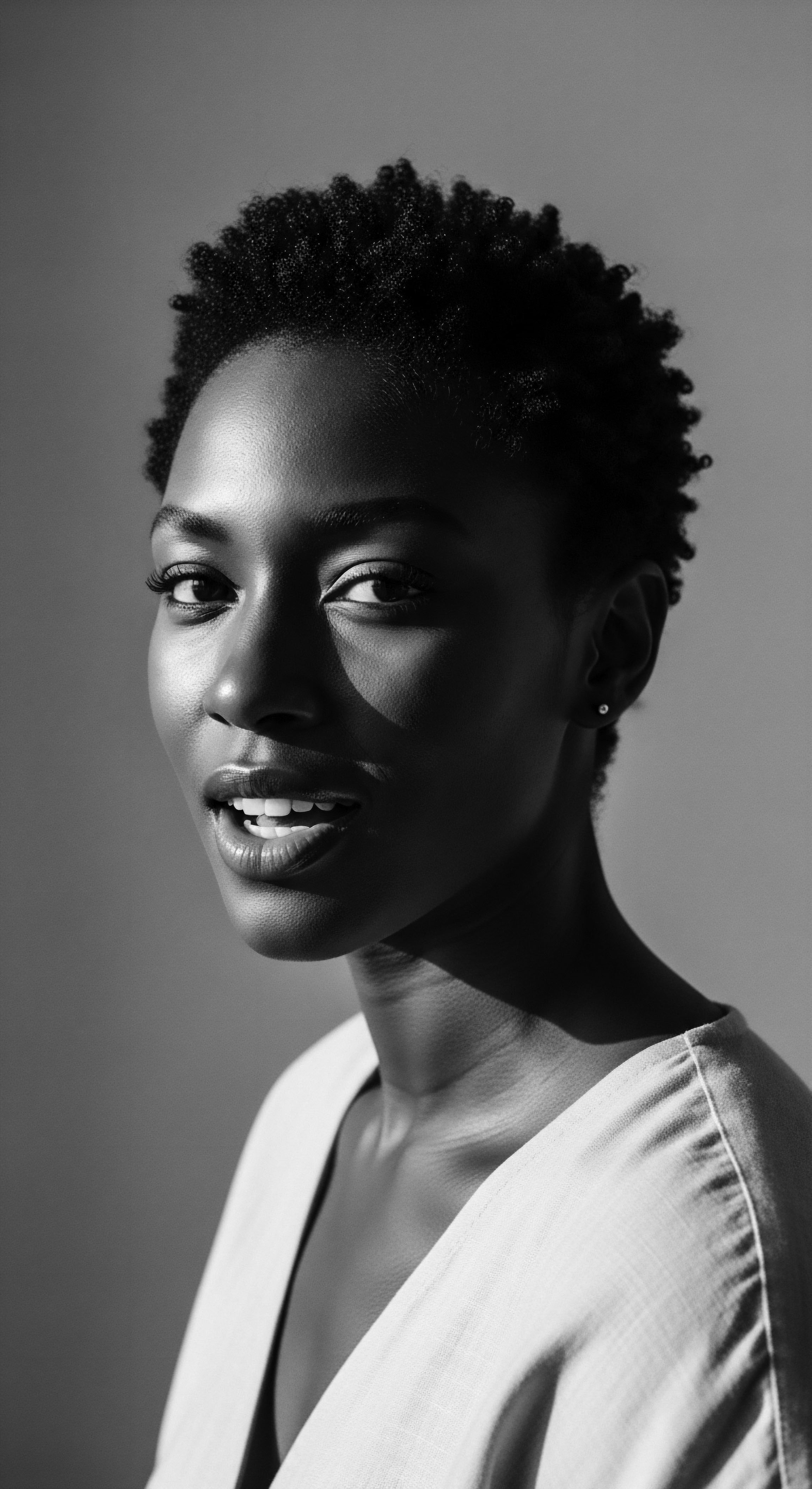
Cultural Cartography of Curls
The rich lexicon of hair in ancient Africa speaks to its societal significance. Hairstyles served as a living map, delineating familial ties, community standing, and personal journeys. The intricate braiding, the careful adornment with shells, beads, and precious metals, were not simply decorative gestures. They were acts of meticulous communication, a visual shorthand for one’s place in the collective.
This deep connection between hair and identity was, however, violently disrupted. When enslaved Africans were forcibly transported across the Atlantic, one of the first acts of dehumanization was often the shaving of their heads. This brutal act severed a primary link to their ancestry, stripping them of a fundamental means of cultural expression and identity.
Ancestral hair practices in Africa were not merely cosmetic; they were deeply rooted systems of social communication and spiritual connection.
A powerful instance of this deliberate cultural erasure, alongside acts of defiance, can be found in the Tignon Laws enacted in 18th-century New Orleans. These laws compelled free women of color, who often wore elaborate hairstyles that showcased their heritage, to cover their hair with a tignon (a scarf or handkerchief). The intent was clear ❉ to visibly mark them as belonging to a lower social stratum, regardless of their free status, and to diminish their perceived attractiveness to white men.
Yet, these women, with remarkable spirit, transformed this imposition into an act of subtle rebellion, adorning their headwraps with vibrant colors and intricate arrangements, making them a symbol of dignity and cultural persistence (Griffin, 2019). This historical example highlights how the policing of textured hair has always been tied to broader power structures and how, even under duress, communities have sought ways to retain their identity.

The Anatomy of Resilience
From a biological standpoint, textured hair, particularly afro-textured hair, possesses distinct characteristics that set it apart. Its elliptical cross-section and unique helical growth pattern give it strength in some aspects, yet also render it more prone to dryness and breakage if not cared for with understanding. Each curl, each coil, represents a point where the hair shaft bends, creating potential for tangling and friction. Understanding this inherent structure, passed down through generations, has always been central to its appropriate care.
Ancient practices intuitively addressed these needs, relying on natural emollients and careful handling. The wisdom embedded in those practices was not merely anecdotal; it was an applied science, a response to the hair’s elemental biology.
The traditional understanding of hair care was often communal, transforming necessary grooming into a social occasion. Women would gather, braiding and styling one another’s hair, sharing knowledge and strengthening bonds. This communal aspect, a cornerstone of ancestral wisdom, provided a consistent, hands-on education in managing textured hair. It was a holistic practice that linked individual wellbeing to collective identity and shared custom.
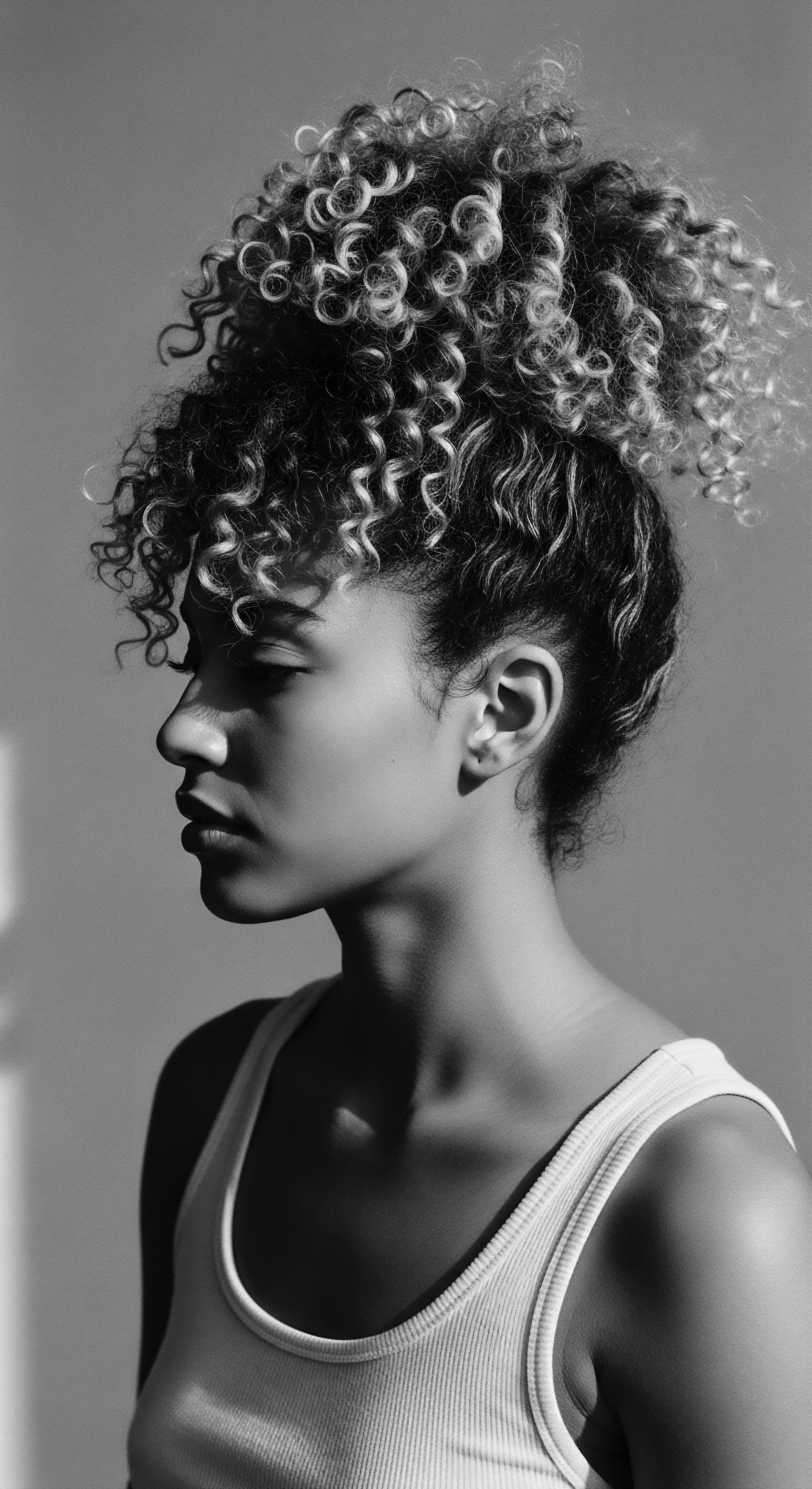
Ritual
The very concept of hair styling for textured hair is deeply intertwined with acts of memory, a continuous conversation between past and present. The techniques, tools, and transformations observed today are not isolated contemporary phenomena; they are echoes of ancestral wisdom, shaped and refined over countless centuries. The natural hair movement, in its varied expressions, draws deeply from this living tradition, affirming styles that were once deemed unkempt or unprofessional by dominant beauty standards. This reclamation is a powerful testament to the enduring influence of heritage.

Echoes of Ancient Hands
The intricate world of braids, twists, and locs, so prominent in natural hair styling, bears the unmistakable imprint of ancestral ingenuity. These styles were not just aesthetic choices in pre-colonial Africa; they held profound symbolic weight. Cornrows, for example, known as “canerows” in some diaspora regions, were not only practical for keeping hair tidy during labor but also served a more extraordinary, covert purpose during the transatlantic slave trade. Enslaved Africans, often rice farmers, braided rice seeds into their hair as a means of survival, smuggling grain from their homelands into new, hostile environments (BLAM UK CIC, 2022).
More remarkably, cornrows were used to create coded maps, patterns etched into the scalp that detailed escape routes from plantations (Afriklens, 2024). This remarkable example of hair as a tool of resistance and a vehicle for survival highlights the deep, often untold, stories woven into textured hair heritage.
Hair braiding, a technique practiced for millennia, served as both a cultural anchor and a clandestine means of communication during periods of oppression.
The survival of these traditions, despite deliberate efforts to erase them through forced hair shaving and the imposition of Eurocentric ideals, speaks volumes about the resilience of these communities. Even as laws and societal pressures pushed towards straightened hair, communal care practices and the quiet persistence of traditional styles maintained a thread to the past.

The Art of Protection
Protective styles, which minimize manipulation and guard the hair ends, are a cornerstone of modern natural hair care, yet their roots extend deeply into ancestral practices. Styles such as Bantu knots, often associated with African heritage, provided both aesthetic appeal and practical benefits for hair health and maintenance in diverse African societies (Bencosme, 2017).
- Cornrows ❉ Tightly braided rows lying flat against the scalp, used for both aesthetic patterns and historical communication.
- Bantu Knots ❉ Coiled sections of hair twisted to form small, knot-like buns, originating from Southern African communities.
- Twists ❉ Hair sections intertwined, ranging from two-strand twists to Senegalese twists, providing low-tension styling.
These styles allowed for long-term wear, reducing daily handling and protecting the delicate strands from environmental factors. The understanding that less manipulation contributes to length retention and overall hair well-being was an intuitive knowledge passed down through generations. The modern natural hair movement has revived and popularized these techniques, recognizing their efficacy and their inherent connection to Black and mixed-race hair heritage.
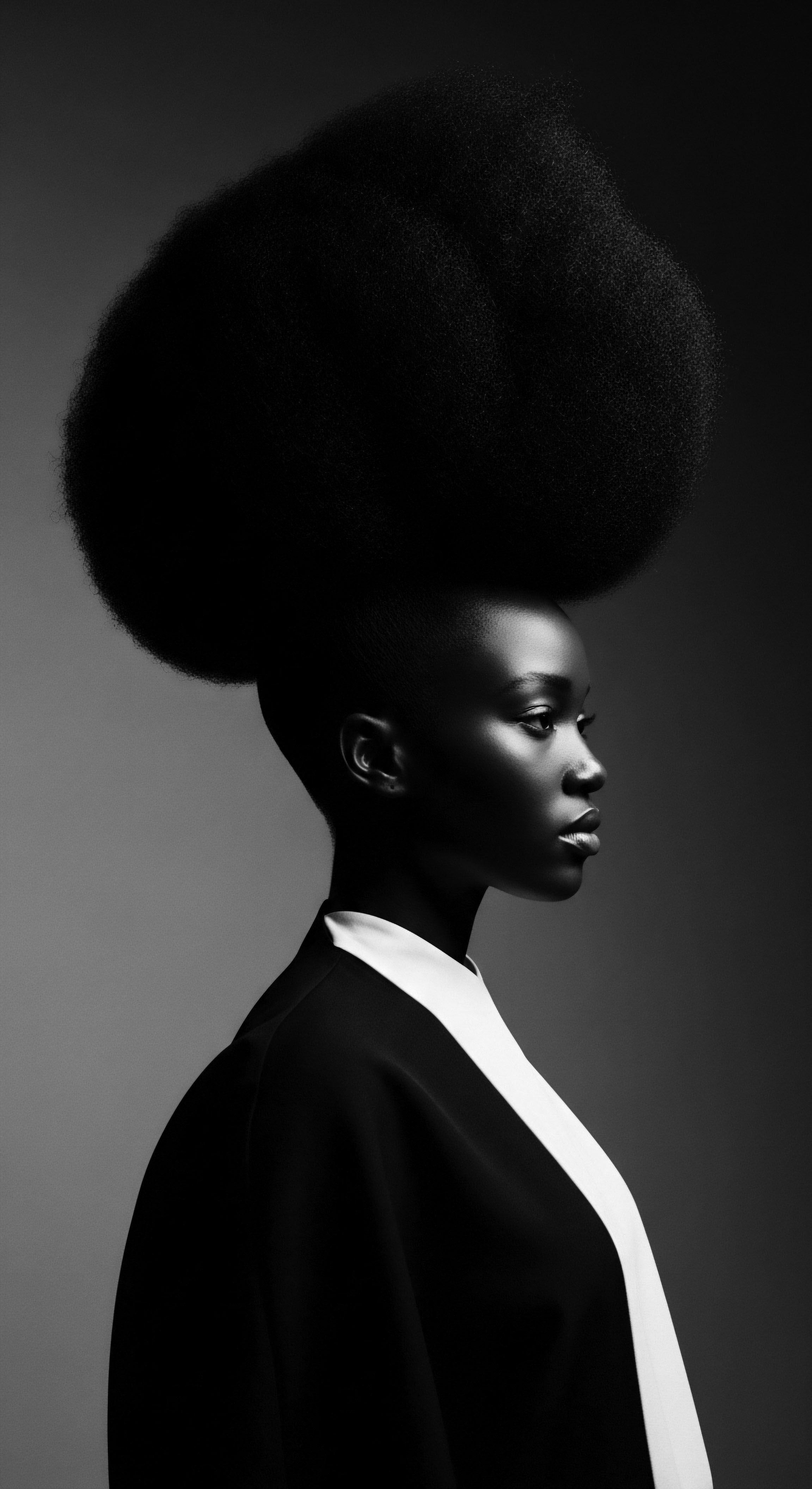
Tools of Tradition
The tools used for textured hair care also possess a rich lineage. The afro comb, often recognized for its distinctive long teeth, has a documented history stretching back thousands of years. Archaeological discoveries in ancient Kush and Kemet (modern Sudan and Egypt) reveal combs dating back 7,000 years, often crafted from wood, bone, or ivory and adorned with symbols reflecting cultural significance (Africa Rebirth, 2022).
These were not just functional items; they were objects of art, imbued with cultural and spiritual meaning, sometimes even buried with their owners as sacred possessions (CURLYTREATS Festival, 2025). The evolution of these combs, from simple picks to more elaborate double-sided instruments, reflects a continuous adaptation to the unique needs of textured hair.
| Historical Tool Afro Comb (Ancient Kush/Kemet) |
| Traditional Purpose and Cultural Link Symbol of status, spiritual gateway, detangling for ancestral styles. |
| Modern Parallel or Legacy Wide-tooth combs, picks; tools for volume and detangling natural textures. |
| Historical Tool Heated Butter Knives (Slavery Era) |
| Traditional Purpose and Cultural Link Makeshift straightening for assimilation; a painful act of conformity. |
| Modern Parallel or Legacy Modern flat irons and hot combs, used for temporary straightening, but with awareness of heat damage. |
| Historical Tool Cowrie Shells/Beads (Pre-colonial Africa) |
| Traditional Purpose and Cultural Link Adornment signifying social status, wealth, tribal identity. |
| Modern Parallel or Legacy Decorative hair jewelry, culturally inspired accessories used in braids, locs, and twists. |
| Historical Tool The tools for textured hair are not just implements; they are artifacts bearing stories of tradition, adaptation, and enduring cultural pride. |

Modernity’s Many Forms
The trajectory of natural hair styles through modern history is marked by periods of suppression and resurgence. In the 19th and early 20th centuries, the societal pressure to conform to Eurocentric beauty standards led to the widespread use of chemical relaxers and hot combs to straighten coiled hair (Thrifts & Tangles, 2021). These methods, often harsh and damaging, were seen as a necessity for social and economic mobility. The idea of “good hair” emerged, typically referring to hair that more closely resembled straighter textures, creating an internalized hierarchy within Black communities (Thrifts & Tangles, 2021).
The first wave of the modern natural hair movement arose in the 1960s with the “Black Is Beautiful” movement, aligning with the Civil Rights and Black Power movements. The afro became a powerful symbol of Black pride and resistance against oppressive beauty norms (JSTOR Daily, 2019). Activists like Angela Davis and the Black Panther Party wore afros as a political statement, a visible rejection of assimilation (Refinery29, 2021). This period marked a significant shift, challenging the notion that straightened hair was the sole marker of beauty or professionalism.
While the initial wave saw a decline in momentum, the late 2000s ushered in a second wave, heavily amplified by social media. Platforms like YouTube and blogs provided spaces for Black women to share hair care journeys, tutorials, and build community, many learning to care for their natural hair for the first time (JSTOR Daily, 2019). This digital renaissance has empowered individuals to explore their natural textures without the prior stigma, further solidifying the natural hair movement’s stance against a singular beauty ideal.

Relay
The commitment to natural hair care today extends far beyond aesthetics; it represents a deep dive into holistic well-being, problem-solving, and a conscious alignment with ancestral wisdom. The principles that guided past generations in maintaining the health and vitality of textured hair continue to inform contemporary regimens, proving their timeless relevance in the face of modern challenges. This commitment to care is an active participation in a living legacy.
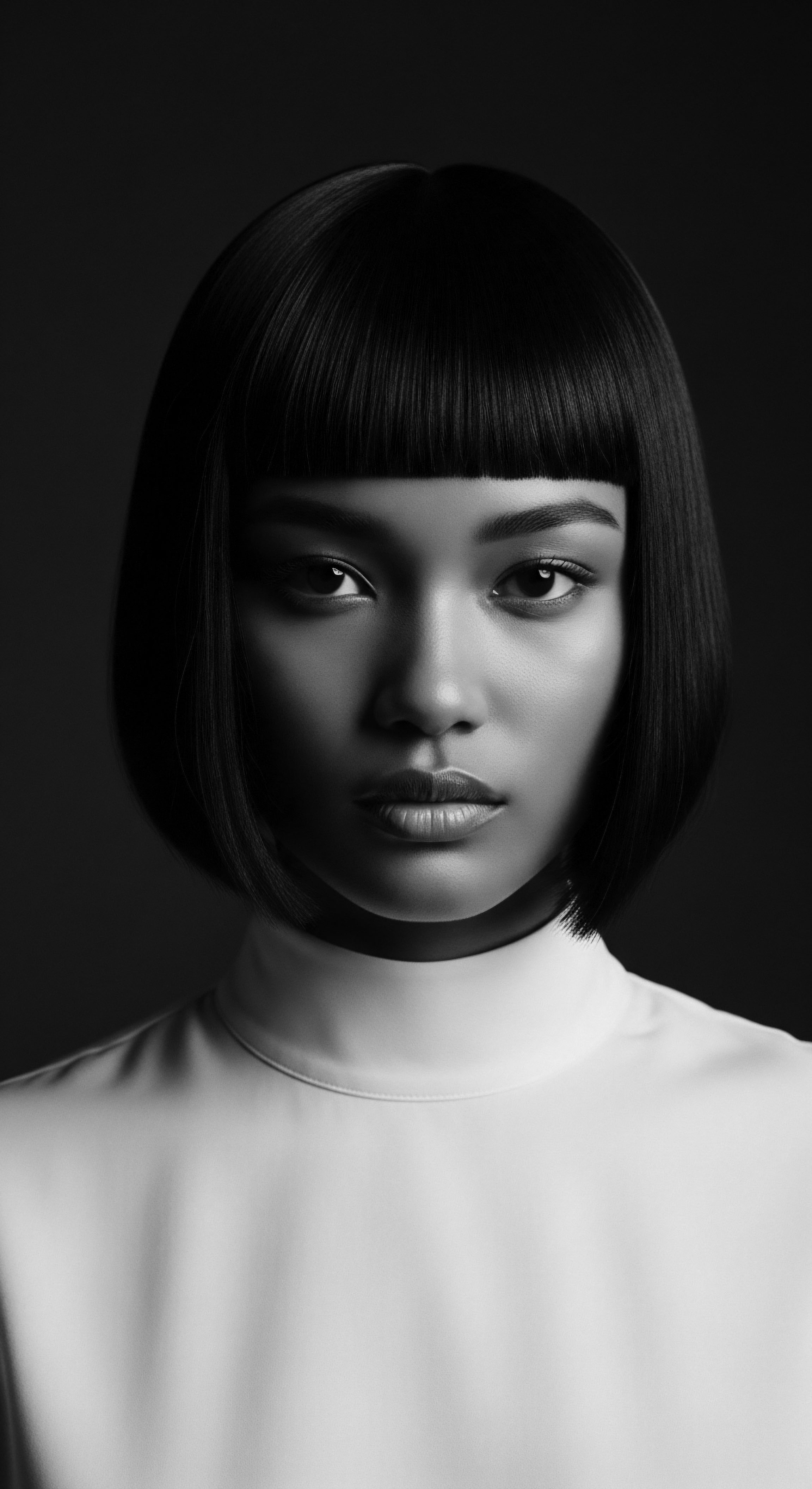
Sustaining the Strand
Building a personalized textured hair regimen today often involves revisiting ancient approaches to hair health. The emphasis on moisture retention, a cornerstone of traditional African hair care, remains paramount. Historical practices incorporated natural butters, herbs, and powders to maintain hydration, acknowledging the hair’s unique structure and its tendency to dry out (Historical Perspectives on Hair Care and Common Styling Practices in Black Women, 2025). Modern science now validates many of these time-honored methods, showing how certain ingredients protect the hair shaft and scalp.
For example, the Basara Tribe of Chad has gained recognition for their practice of applying a mixture of herbs and animal fat, often referred to as Chebe, to their hair weekly for length retention (Reddit, 2021). This practice, documented by ethnobotanical studies, highlights an ancestral understanding of sealing in moisture and minimizing breakage. The consistency of these historical traditions, often passed down through oral histories and communal rituals, forms a blueprint for contemporary, mindful hair care.
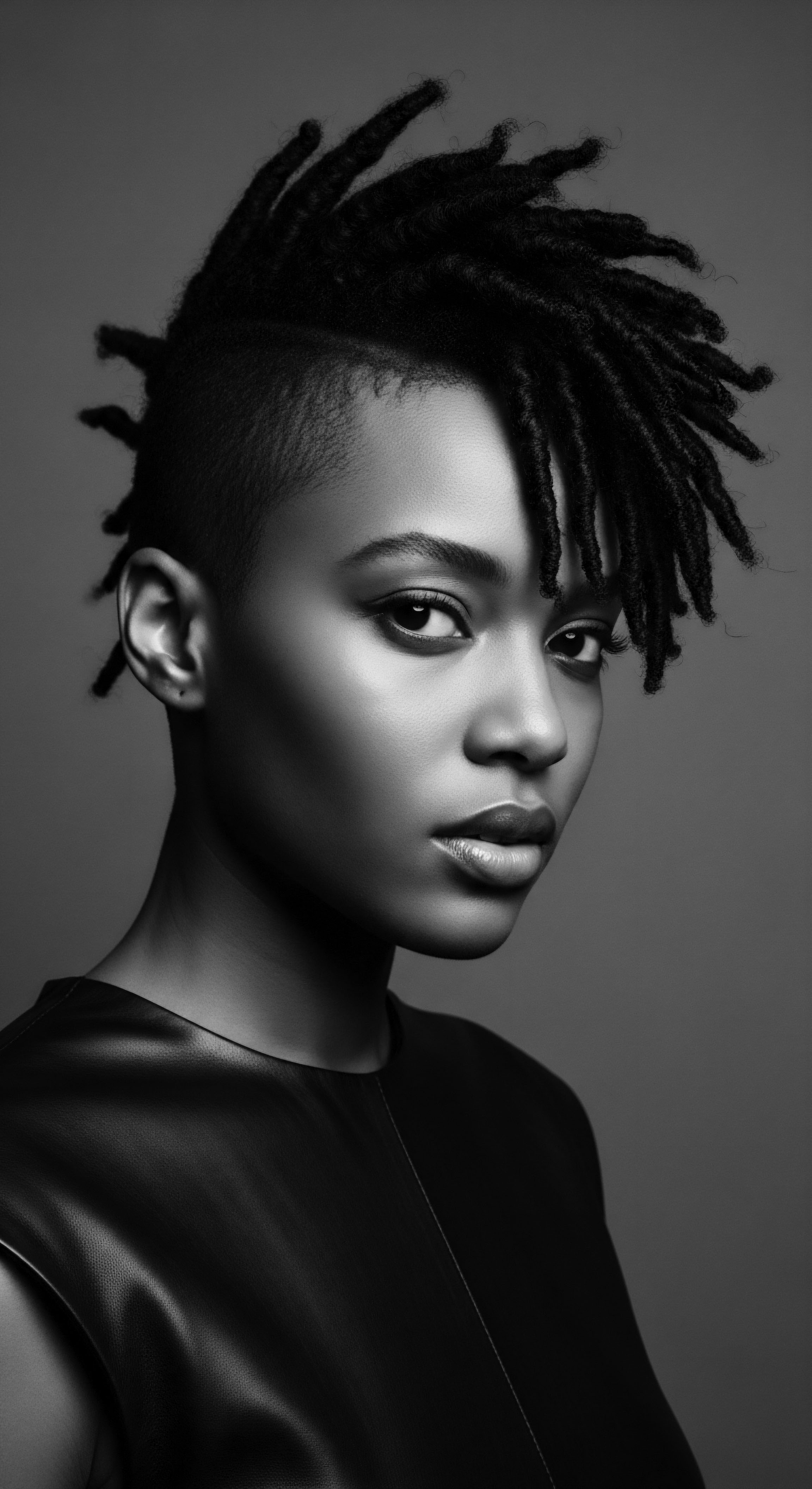
The Night’s Gentle Embrace
Nighttime rituals hold a particular significance in textured hair care, extending back to practical measures adopted for protection and preservation. Headwraps, for instance, were worn by enslaved women to protect their hair from the harsh demands of field labor and to subtly defy imposed beauty standards (JSTOR Daily, 2019). Over time, these head coverings became symbols of dignity and resilience. Today, the bonnet, a staple for many with textured hair, serves a similar protective purpose.
It shields delicate curls and coils from friction against pillows, preserving moisture and preventing tangling and breakage during sleep. This practice, often seen as a simple routine, holds within it a thread of continuity, a quiet nod to the past generations who understood the value of safeguarding their strands. The wisdom embedded in choosing a soft covering for nighttime protection is an inheritance.

Botanical Legacies
The ancestral pharmacopeia for textured hair care is rich with ingredients that modern science now increasingly recognizes for their efficacy. These are not merely folk remedies; they represent centuries of empirical observation and application.
- Shea Butter ❉ A rich emollient from the nuts of the Karité tree, used for centuries across West Africa to moisturize hair and skin, and now a global staple in hair products.
- Baobab Oil ❉ Extracted from the “Tree of Life,” known for its nourishing properties and ability to support hair health.
- African Black Soap ❉ Crafted from the ash of local plants, it cleanses without stripping natural oils, providing vital nutrients to the scalp.
- Chebe Powder ❉ Used by the Basara women of Chad, this powder is recognized for promoting hair length retention and deep conditioning properties.
- Hibiscus ❉ Rich in vitamins and amino acids, it strengthens roots, reduces thinning, and balances scalp pH.
The deep understanding of these natural elements, their extraction, and their application speaks to a profound connection with the earth and its offerings. The deliberate choice to use these ingredients is a conscious linking to a heritage of self-sufficiency and natural wellness.

Generational Wisdom for Today’s Woes
The natural hair movement continues to confront ingrained societal biases. Despite progress, individuals with textured hair still encounter discrimination in professional and educational settings (Sunday Standard, 2014). For example, Chastity Jones was rescinded a job offer in 2010 because she refused to cut her locs, with the hiring manager stating they “tend to get messy” (JSTOR Daily, 2019). While the Equal Employment Opportunity Commission (EEOC) filed a suit on her behalf, the courts ultimately sided with the company.
This case, though years ago, illuminates a persistent challenge, showcasing that biases against natural hair, particularly locs, continue. It underscores the ongoing need for legal protections, such as the CROWN Act in the United States, which aims to prohibit discrimination based on hair texture and protective styles.
Such instances reveal that the battle for acceptance is far from over. The natural hair movement, by consistently asserting the validity and beauty of textured hair in all its forms, directly addresses these persistent prejudices. It provides a community of support, resources for self-care, and a collective voice demanding recognition and respect.
The act of choosing to wear natural hair in environments where it is subtly, or overtly, deemed unprofessional, is an act of quiet, yet powerful, defiance. It carries forward the legacy of resistance that has always been intertwined with textured hair heritage.

Reflection
The natural hair movement, viewed through the lens of textured hair heritage, stands as a testament to profound endurance. It is a living, breathing archive of ancestral wisdom, resilience, and unyielding identity. The question of whether these movements still challenge modern beauty standards finds its answer not in a single pronouncement, but in the continuous, vibrant expression of self that echoes across generations.
From the elemental biology of the coil, shaped by ancient suns, to the coded messages braided into strands during times of unimaginable duress, textured hair has always been more than mere fiber. It has been a language, a symbol, a shield, and a celebration. The movements of today, with their digital communities and visible assertions of natural beauty, are not simply trends. They are the latest chapter in a long, unbroken lineage of self-affirmation against pervasive, often oppressive, beauty ideals.
The collective return to textured hair, the conscious choice to honor its natural state, is a profound act of decolonization, a reclamation of a heritage once forcefully suppressed. It is a commitment to a wellness that extends beyond the individual, reaching back to honor the practices of foremothers and forefathers. The stories braided into our strands are continuous; they speak of struggle and triumph, of science and spirit, of the undeniable power of self-acceptance. The soul of a strand, indeed, vibrates with the echoes of a deep, living past, continuously shaping a more inclusive and authentic future.
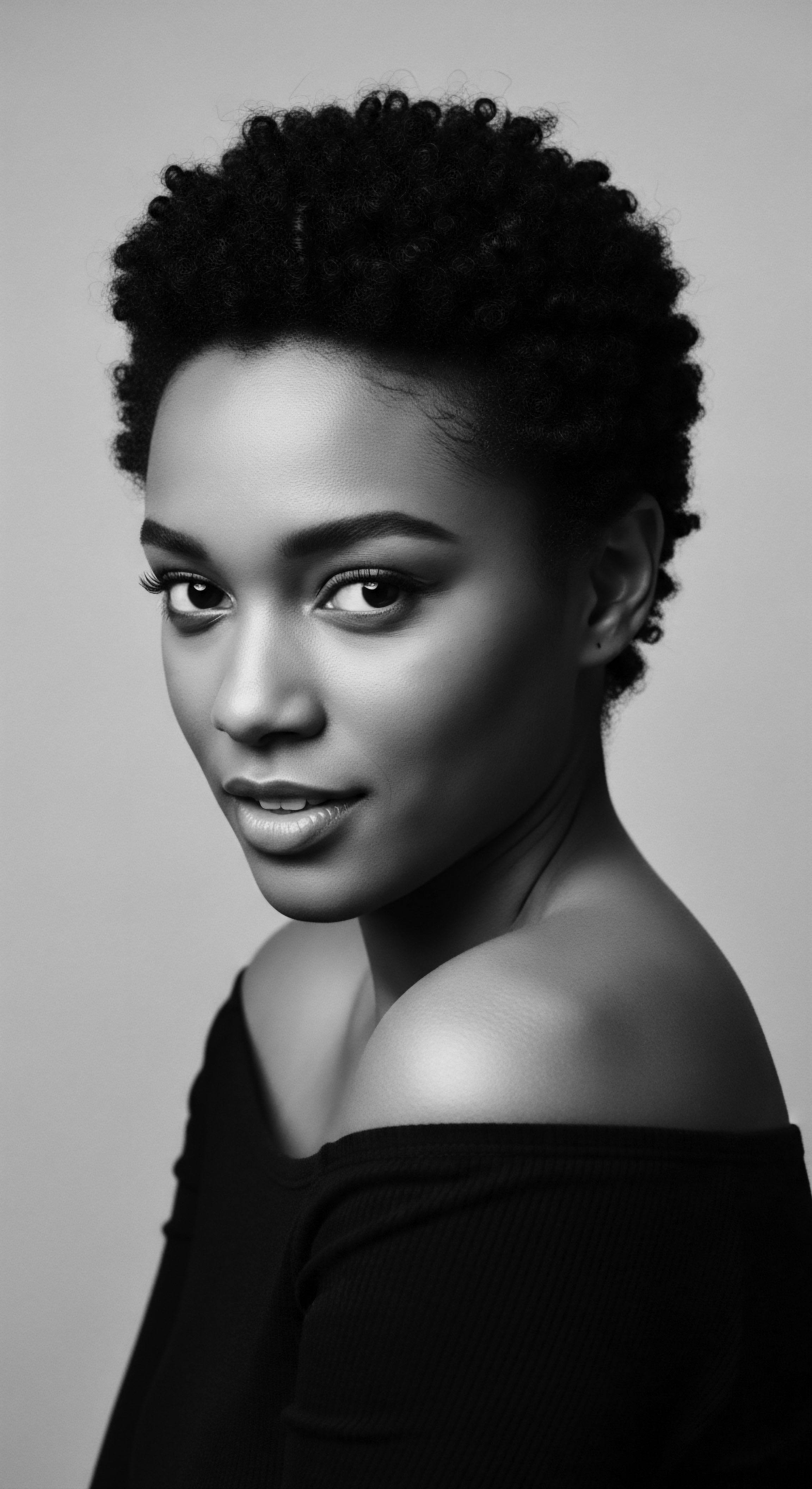
References
- Banks, I. (2000). Hair Matters ❉ Beauty, Power, and Black Women’s Consciousness. New York University Press.
- Bencosme, L. (2017). Beauty is Pain ❉ Black Women’s Identity and Their Struggle with Embracing Their Natural Hair. University of New Hampshire Scholars Repository.
- BLAM UK CIC. (2022, September 15). The History of Black Hair. BLAM UK CIC.
- CURLYTREATS Festival. (2025, February 8). Afro comb ❉ the cultural and political legacy behind this iconic hair tool. CURLYTREATS Festival.
- Griffin, C. (2019, July 3). How Natural Black Hair at Work Became a Civil Rights Issue. JSTOR Daily.
- Historical Perspectives on Hair Care and Common Styling Practices in Black Women. (2025, March 4). Historical Perspectives on Hair Care and Common Styling Practices in Black Women .
- Reddit. (2021, August 26). No raw oils and butters vs. Traditional African hair care? r/Naturalhair.
- Refinery29. (2021, February 23). The Evolution Of The Natural Hair Movement. Refinery29.
- Sunday Standard. (2014, November 21). The ‘Natural Hair’ Movement Challenges Beauty Standards. Sunday Standard.
- The African Rebirth. (2022, April 18). The African Tales of The Historical 7000 Year Old Afro Comb. The African Rebirth.
- Thrifts & Tangles. (2021, December 16). The Evolution of Black Hair for Beauty & Resistance. Thrifts & Tangles.
- Tharps, L. & Byrd, A. (2001). Hair Story ❉ Untangling the Roots of Black Hair in America. St. Martin’s Press.
